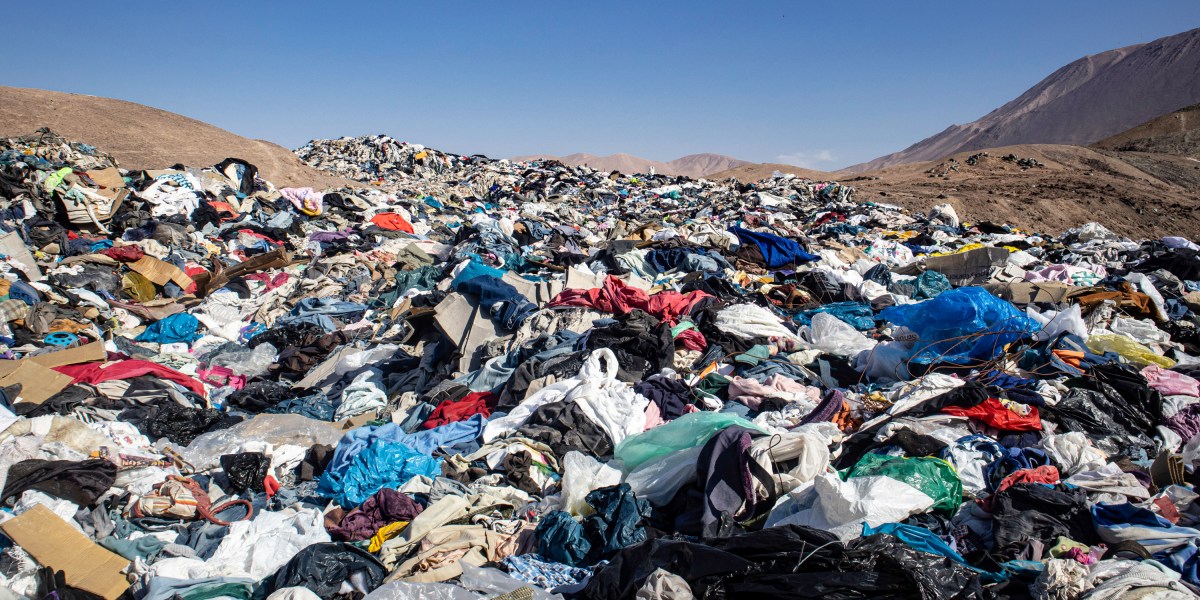I mean, you could also have clothing that’s a) not made from plastic and b) lasts longer.
But you know, capitalism.
Fast fashion is one of the worst things to happen to humanity. It has exploited slave labor, destroyed the environment, and created oligarchs worldwide.
I don’t disagree with you that it’s bad but I don’t think changing the fashion industry is going to solve those problems either. People are selfish and exploitation is in our nature. We will simply invent new ways to steal from and oppress others unless the whole world suddenly decides they don’t like money. The people making cheap shirts in Malaysia still need to make a living if we shut down the sweat shops. Unless the root problem is solved they’ll just be out of work until Apple or whoever else comes in to exploit the cheap labor market and the cycle starts over again.
In addition to being a microplastic pollution disaster, for most daily use polyester just isn’t as good as cotton or other natural fibers. It’s especially bad for underwear and socks because it just lets moisture sit there instead of wicking it away and letting it dry.
And totally subjective here, but I think it feels like shit.
Yeah, I avoid plastic in my clothing unless it’s utility, like a few of my low temperature outdoor gear items.
Polyester is such a shit material to wear, even if it’s cheap, it sucks too much. Like saving money on TP by getting the cheap stuff that’s more like fine grit sandpaper.
I worked on a similar (but competing) technology to this one for a few years. Depolymerization is absolutely the way forward for most polymer recycling.
For most uses, manufacturers want plastic that’s colorless and has good physical properties. Melting down clear plastic can work, but it degrades the polymers in hard-to-control ways. And if there’s any pigment in the plastic, forget about it.
If you break down polymers into their constituent monomers, you’ve turned a polymer process into a chemical process. Polymers are hard to work with. Chemicals are, comparatively, pretty easy. You can do a step or two to extract all the color and impurities, then re-polymerize the cleaned up material and get plastic that’s indistinguishable from brand new.
If your depoly process is good, it can distinguish between different polymers, so you can recycle mixed waste streams. Ours was even pretty good at distinguishing nylon from PET, which I sorta doubt the zinc process will be. But hey, more competition in this space is gonna be good for the world.
So, what’s the drawback of depolymerization? Sounds cool. Does it use baby tears as a catalyst?
Drawbacks are mostly the economics of it. You have to convince people to put time and energy into turning waste into monomers. If the monomers you get from crude oil are cheaper, you’ve got an uphill battle.
The catalysts can be complex, but the good ones are really simple. The zinc one in this article is pretty easy to understand. Ours was an organic molecule, but a really abundant and cheap one. (We could easily recover and re-use the catalyst, too, which I also doubt most of the metal salt catalysts are capable of). Part of the project was optimizing that catalyst. We found ones that worked a little better, but were like 10x as expensive. So we just used a little more of the simple one and figured out how to use it over and over.
That sounds really handy! Can’t wait to never hear about it again!
Even better, just have companies post this on their labels, but never disclosing is so much more expensive than getting a one from raw materials that no one bothers.
Could. It won’t happen if it’s not profitable.
But it can be made profitable. The local government of your area could decide to slap fines on companies that pollute and subsidize those that use better technologies. If you want to influence those decisions, consider voting accordingly.
I was excited to see it’s someone different than who I thought this article would be about. I heard a similar story about breaking down synthetic fibers to their original components, making them (infinitely?) reusable, not just for recycled fiber, but as new fiber. The process in this story seems to save natural fiber as well, so there’s at least 2 groups working on different methods, so success is more likely, I hope.
How I Built This Podcast with Guy Raz • Episode 551 • Threading the future of circular fashion with Peter Majeranowski of Circ
Over one hundred billion garments will be produced this year, but they don’t have to be.
Peter Majeranowski says we have all the clothes we need to make all the clothing we’ll ever need, and his company, Circ, has pioneered the technology to prove it.
This week on How I Built This Lab, Peter shares how trying to create fuel from tobacco unintentionally led to the creation of a different material — pulp that could go back to the beginning of the supply chain and close the loop on fast fashion. Plus, the future of sustainability in the industry and the impact brands can have on the environment simply by changing their fabric sources.
Removed by mod
Neither does throwing it in a dump. Microplastic environmental contamination will mostly be down to improved water treatment, which other people are working on as well.
Improved water treatment just means we aren’t drinking it, it doesn’t mean the environmental contamination isn’t there.
Reducing what gets into the water supply is still helpful. Rather than just letting all go into the rivers and oceans. At this point the clothing and so much material is already made/being made. Microplastics are going to be a thing for a long long time. Anything that can somewhat mitigate it is good. Reuse of a thing is pretty much always better than trashing it, at least environmentally. And never making/buying it in the first place is even better.
Removed by mod
Get a room you two
Removed by mod








